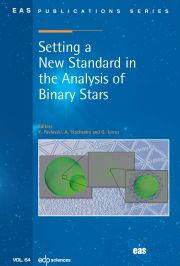Article contents
Modelling the SEDs of spiral galaxies
Published online by Cambridge University Press: 20 December 2008
Abstract
Modelling the UV/optical - infrared/submm SEDs of spiral galaxiesobserved with Herschel will be an essential tool to quantitativelyinterpret these observations in terms of the present and paststar-formation activity of these systems.In this lecture we describe the SED modelling technique we havedeveloped, its applications and tests of its predictions. We show that both the panchromatic SED modelling of individual galaxies and the B-band attenuation-inclination relation oflarge statistical samples suggest that spiral galaxies in the nearby Universe behave as optically thick systems in their global properties and large-scaledistribution of light (central face-on B-band opacity of τBf~4). However disk galaxies are veryinhomogeneous systems, having both optically thick components (e.g. spiralarms), and optically thin components (e.g. the interarm regions), the lattermaking galaxies transparent to background galaxies.
Information
- Type
- Research Article
- Information
- Copyright
- © EAS, EDP Sciences, 2009
References
- 2
- Cited by

